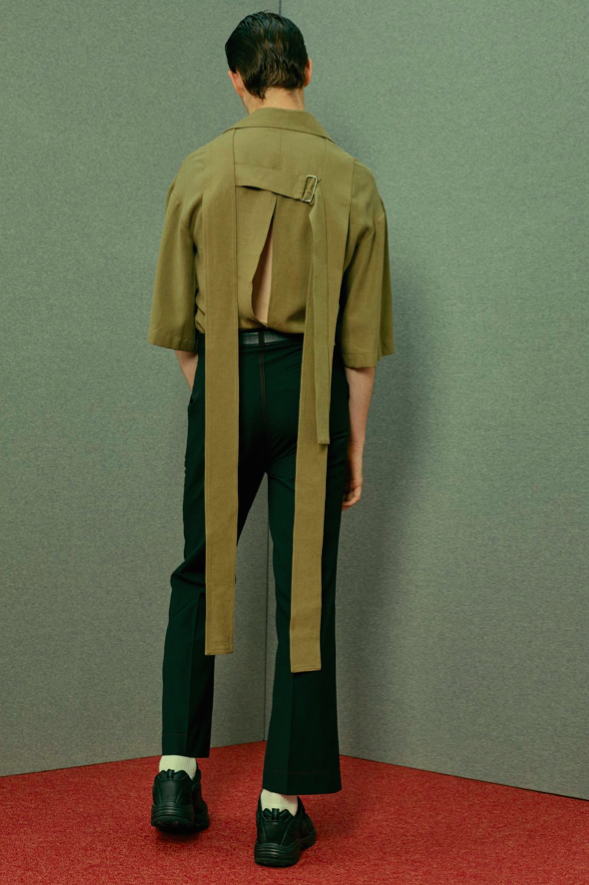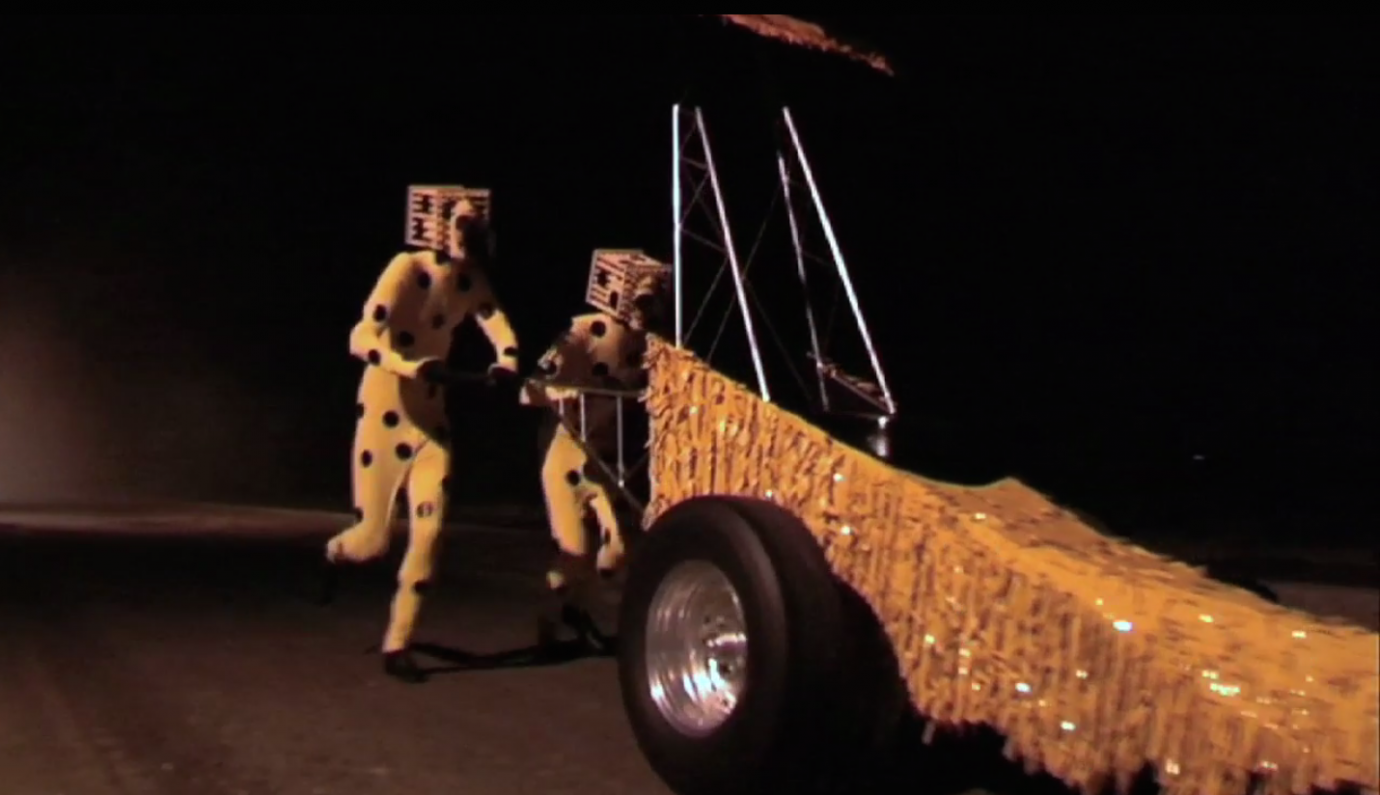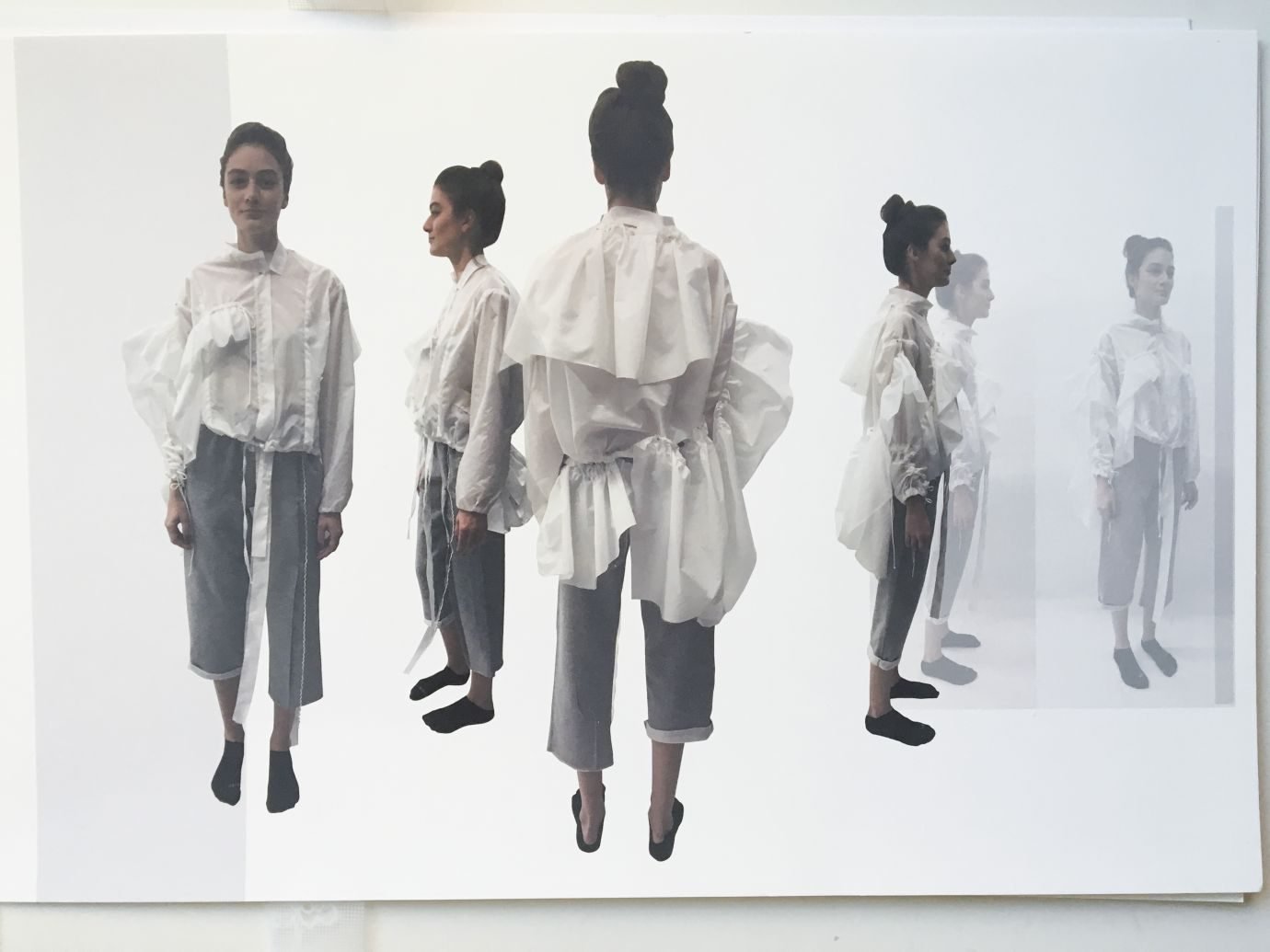Born on an aeroplane, Karen Heshi has challenged geopolitical boundaries from the very beginning. Now 25, she moved from China to Vancouver in Canada at the age of 8 where she would spend the rest of her childhood. The early move meant she had to learn English when she still wasn’t very fluent in Chinese. Struggling to make friends in Vancouver because of the language barrier, she started illustrating her vocabulary words to help learn English more quickly. Sketching definitions morphed into sketching clothes, precipitating her interest in fashion. She started remaking her clothes for fun. “I would cut into them, manipulate them, play with them,” she says.
Karen Heshi: “Why must a suit look like a suit?”
The designer reflects on the tension between functionality and identification in her graduate collections.
“There’s always borders around fashion school.”
She enrolled for foundation at the London College of Fashion intending to study design but was placed in the business pathway instead. Undeterred, she begged the womenswear tutors to let her sit in on their classes. Promising to complete all assignments in both courses, she got permission and managed to finish the year with two portfolios and a place on the BA Womenswear course. Still, that came with its own challenges. “In womenswear, I could only place my focus on silhouettes and shapes,” she says, but she wanted to create her own textiles too. “There’s always borders around fashion school,” she says.
After working in Shanghai for a few years, Heshi joined the Parsons MFA, where she reoriented her design process around memories, personal exploration, and everyday life. She now thinks experimentation is the best research method. “Films and books, they can give you a mood or feeling of what you want to do.” But if you rely too heavily on secondary research, you run the risk of cliché, plagiarism, and inauthenticity, she believes. “When you do it on your own, when you do it by hand, it’s more you.”
When conceiving her thesis collection, she reflected on all the extracurricular activities she did as a child: figure skating, ballet, swimming, playing the flute and piano, not to mention lessons in French and Japanese. It was more to please her parents than to make her happy, she realized. It was a performance through which they could live vicariously. All these activities just taught Heshi to modulate her behaviour and obey authority: a process of education society forces upon children which she calls uniformization. As children become teenagers, they de-uniformize as they learn to resist the authority of adults, Heshi says. But then as they enter the workforce as adults, they re-uniformize as professionals, enforcing the uniformization of the next generation. Emphasized by her terminology, she firmly believes in the significance of the uniform in this system.
Heshi says that all uniforms serve one of two roles, either identification or functionality. “The two are drastically different.” For example, nurses wear scrubs to signal their position within a team of medical experts. On the other hand, scuba divers wear bodysuits for mobility and thermal protection. Ever the boundary-breaker, Heshi sought to deconstruct this duality by merging identification with functionality. Considered the uniform of business, the suit seemed a natural archetype to break down. “Why must a suit look like a suit?” she wonders. “That’s how it all started.”
Inspired by the netted foam used to cushion fruit at Chinatown grocery stores, she started laser-cutting fabric with parallel rows of short slits. The slashing technique allows a woven fabric to stretch like a knit, so the wearer can look professional but move with ease: identification plus functionality. The laser-cutting process took a while to perfect. Early trials left scorch marks on her fabric. “I had to control the degree of the burn and the degree of speed,” she explains.
Some of Heshi’s suits result more from imaging than tailoring. She digitally printed life-size suit photographs onto sheer organza, layering them flat to evoke the ephemeral two-dimensionality of a digital image. “When it looks flat, it’s not a suit. But when it turns around and faces you, that’s when the suit comes out,” she says. “I was playing with the eye.” Her designs reward an attentive viewer. Close attention can slide into surveillance, however, a theme she suggests through her ‘invisibility’ technique. She screen-printed suit images on one garment in a special light-reflective ink. “With the naked eye, you don’t see the suit at all; it looks like a gown,” she says. But when you shine a light on it, or take a photo with flash, the suit details appear.
Handicraft plays a discreet but crucial role in the collection. She crocheted light-reflective yarn to attach panels of some suits together. “I invented a crochet in diagonal zigzags to have a clean finish,” she says. Beadwork helped to weigh down some laser-cut slash marks so the garment would sag downward into a more desirable shape. She relied on interns to execute these hand-intensive details until the pandemic shut down the Parsons studios and she had to work alone. Hastily finishing the crochet for a couple looks in time for a shoot nearly damaged her wrists, she says. “My boyfriend had to rub in this essential oil to help my veins circulate because my hand couldn’t move.”
“Why must clothing have only one definition? Why must we have rules about what clothing should look like?”
In the future, Heshi wants to work in fashion design while starting up her own practice. She hopes her future work will continue to provoke more questions than answers about how people approach fashion in their everyday life. “Why must clothing have only one definition? Why must we have rules about what clothing should look like?”



































































